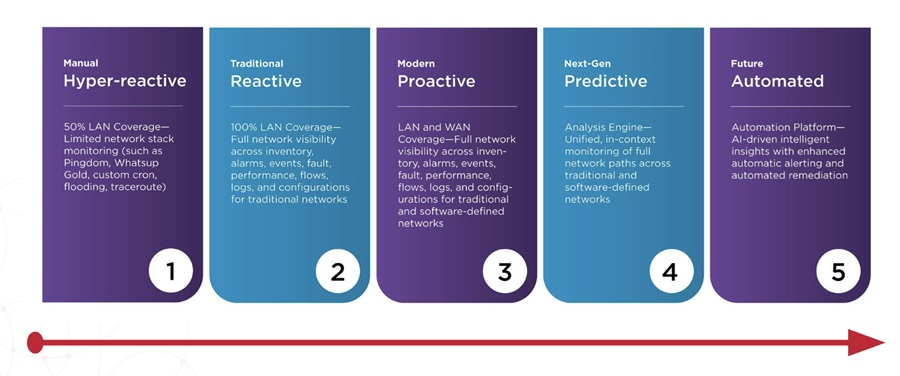When it comes to maneuvering data, agility is key. While traditional current IT systems can offer stability and resilience, they also come with pain points that can hinder an enterprise's ability to adapt and keep up with customer demands. In response to these challenges, many companies are turning to IT as a Service (ITaaS) as a strategic solution to augment and gain the nimbleness they need to compete in a data-deluged world.
As the Hitachi Vantara Modern Data Infrastructure Dynamics Report found, more than 75% of U.S. companies say legacy data infrastructure is falling short as data security and sustainability challenges surge, underscoring the increasing need for agile and resilient IT infrastructure in the coming years. Nearly 60% of U.S. companies are overwhelmed by the amount of data they manage, emphasizing the need for IT infrastructure to be as robust as it is agile to enable businesses to adapt and meet the changing needs of their customers and the market. As an agility-boosting complement to modern IT infrastructure, ITaaS consumption-based models are taking hold and are expected to grow.
A recent in-depth study conducted by Forrester Consulting on behalf of Hitachi Vantara illuminates a notable shift from traditional IT infrastructure to the adoption and inclusion of ITaaS. According to the study, 73% of respondents said their organization has adopted ITaaS for one or more infrastructure solutions, and 42% said it is expanding adoption. This transition is driven by the urgent need for technology delivery that is faster, more reliable, cost-effective and sustainable. The study also shows that 55% of enterprises are struggling to extract valuable insights from their data, which is a challenge that businesses cannot afford to overlook in a world where data is king.
ITaaS offers a promising solution, enabling companies to access technology services on-demand, scale resources as required and benefit from enhanced security and reliability.
Unleashing Data Insights
While ITaaS is a game-changing solution, it is not a stand-alone silver bullet. Instead, it is a necessary complement to modern hybrid cloud data infrastructure. By delivering technology faster, more reliably, and across multiple locations, ITaaS empowers organizations to unlock the full potential of their data that impacts their business and competitive advantage. Hybrid cloud data infrastructure provides flexibility, scalability, and cost savings, enabling organizations to deploy their most sensitive workloads in an on-premises cloud, connect to workloads and data sources, and host less critical resources on third-party public cloud providers. By striking a balance between on-premises infrastructure and the cloud, organizations can leverage the best of both worlds to drive innovation and achieve their data-driven goals.
Legacy Meets Subscription and Consumption Models
If left unaddressed, legacy infrastructure can lead to a drag on business growth, resulting in revenue losses and inflated costs. A considerable 56% of businesses experience a downturn in revenue due to technology downtime, while 50% face high total costs of ownership (TCO) and substantial technical debt. However, modern data infrastructure can help overcome these challenges. ITaaS is a flexible, cost-effective solution that can take modern data infrastructure to the next level.
By shifting from traditional infrastructure purchase or lease models to subscription and consumption-based ITaaS models, businesses can reduce TCO by up to 20%. This shift in financing is a cornerstone of efficient budgeting and resource allocation. The pay-per-use model of ITaaS allows businesses to pay only for the resources they use, reducing the need for overprovisioning and minimizing waste.
Additionally, ITaaS provides businesses with the flexibility to scale up or down as needed, enabling them to respond quickly to changing market conditions. By leveraging ITaaS as a necessary complement to modern hybrid cloud data infrastructure, businesses can unlock the full potential of their data and drive innovation to achieve their data-driven goals.
Skyrocketing ITaaS Growth
The research findings unveil a remarkable trajectory of ITaaS growth, not only for individual solutions but across various infrastructure categories. Currently, 56% of respondents have already integrated ITaaS into all their primary infrastructure. This number is projected to soar to an impressive 86% within the next three years. Organizations are increasingly recognizing that ITaaS models are indispensable for modernizing their technology capabilities and ensuring long-term competitiveness.
Partnering for Success
Selecting the right ITaaS vendor is a pivotal decision in the ITaaS journey. Beyond fundamental pricing considerations, decision-makers now carefully evaluate factors such as the partner's proficiency in supporting hybrid and multi-cloud strategies, providing expertise and enabling rapid innovation through seamless technology service integration. A strategic partnership with the right vendor can significantly ease the ITaaS transition, reduce operational burdens and empower organizations to innovate without being hindered by legacy systems.
The study underscores the pressing need for organizations to revolutionize their IT infrastructure by embracing ITaaS models. These models provide the flexibility, scalability and cost-efficiency required to navigate complex hybrid cloud environments and address legacy infrastructure issues.
As modern businesses turn to the cloud for speed and adaptability, ITaaS models are becoming a vital component of their strategy for managing traditional, cloud-native and mission-critical applications and workloads. To succeed in this transition, organizations must carefully select the right ITaaS vendor that aligns with their strategic goals, providing the necessary expertise and support. Embracing ITaaS isn't just an option; it's the catalyst for unleashing an enterprise’s true potential in the digital age.


